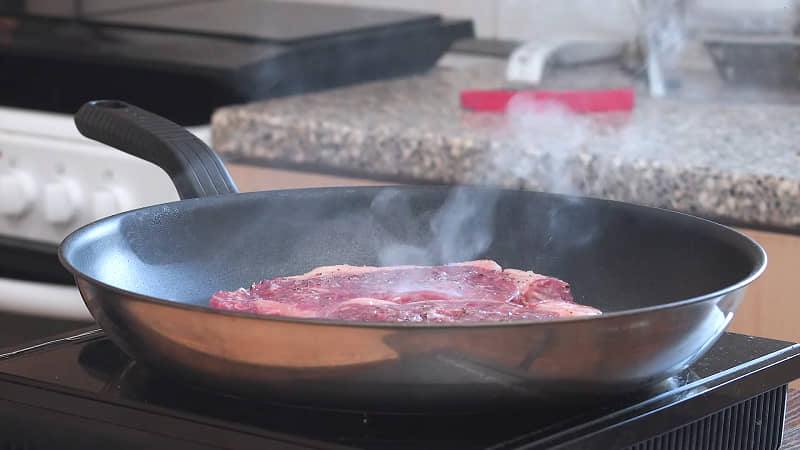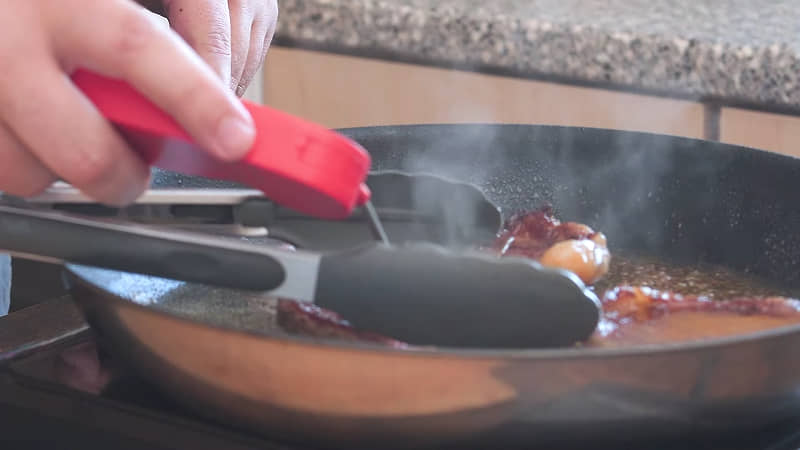Welcome to the ultimate guide on “How to Cook Top Sirloin Steak.” Whether you’re a seasoned cook or a beginner, this comprehensive tutorial will walk you through the essential steps and techniques required to master the art of cooking a succulent top sirloin steak. So, without further ado, let’s dive into the world of flavors and learn how to cook top sirloin steak like a pro.
Measuring Doneness
When cooking top sirloin steak, it is crucial to measure the doneness accurately to ensure a perfectly cooked piece of meat. This section will discuss the implementation of three subheadings related to measuring doneness.
Using a Meat Thermometer for Accurate Results
To achieve precise doneness, using a meat thermometer is highly recommended. Insert the thermometer into the thickest part of the steak, avoiding any bones or fat. The temperature that indicates the desired doneness for top sirloin steak are as follows:
- Rare: 125°F (51°C)
- Medium-rare: 130°F (54°C)
- Medium: 140°F (60°C)
- Medium-well: 150°F (65°C)
Regularly checking the internal temperature can avoid undercooking or overcooking the top sirloin steak.
Understanding Different Levels of Doneness (rare to medium-well)
Familiarizing yourself with different levels of doneness will help you achieve the desired result for your top sirloin steak. Here are the main levels of doneness and their corresponding features:
- Rare: The center of the steak appears bright red, with a cool and juicy texture.
- Medium-rare: The center is pink, tender, and still juicy.
- Medium: The center is a medium pink color, slightly firm, and less juicy.
- Medium-well: The center is slightly pink, firmer, and has reduced juiciness.
Adjusting Cooking Times Based on Desired Doneness

Adjusting the cooking time is essential to cooking a top sirloin steak to the desired doneness. If you prefer a rare or medium-rare steak, it requires less cooking time. Conversely, you will need longer cooking durations for a medium or medium-well steak. By understanding the level of doneness desired and adjusting the cooking time accordingly, you can ensure a perfectly cooked top sirloin steak that suits your taste preferences.
Troubleshooting and Common Mistakes
Overcooking and Undercooking Pitfalls
Overcooking can result in a tough and dry steak, while undercooking can lead to a raw and chewy texture. To achieve perfect doneness, it’s recommended to use a meat thermometer and follow the recommended cooking times and temperatures. This will ensure that the steak is cooked to your desired level of doneness, whether it’s rare, medium-rare, medium, or well-done.
How to Salvage Overcooked Top Sirloin Steak
- One method is to slice the steak thinly across the grain and use it in stir-fries or fajitas, where the meat can be cooked further with other ingredients to add moisture and flavor.
- Another option is to slice the overcooked steak and serve it as a topping for salads or sandwiches.
- Additionally, you can marinate the steak in a flavorful sauce or gravy to help tenderize it and add moisture.
Preventing Dryness and Toughness
- First, let the steak come to room temperature before cooking, as this will help it cook more evenly and retain moisture.
- Season the steak properly with salt and pepper or your desired seasonings to enhance its flavor.
- Thirdly, using the right cooking method is crucial. Grilling, pan-searing, or broiling the steak are great options for achieving delicious results.
- Lastly, allow the steak to rest a few minutes after cooking before slicing or serving. This will help the juices redistribute, resulting in a juicier and more tender steak.
Serving and Presenting Top Sirloin Steak

Resting the Steak for Optimal Tenderness
To ensure optimal tenderness and juiciness, it is crucial to let the cooked top sirloin steak rest before serving. Allow the steak to sit for about 5-10 minutes after removing it from the heat source. This resting period allows the juices to redistribute within the meat, resulting in a more flavorful and tender steak.
Carving and Plating Techniques
When it comes to carving and plating top sirloin steak, a few techniques can elevate the presentation of your dish. It’s best to carve the steak against the grain, which means cutting perpendicular to the muscle fibers. This makes it easier to chew and enhances the tenderness.
For plating, you can slice the steak into thin strips and arrange them neatly on a plate or place the whole steak on a serving dish with some garnish. Use a sharp knife for clean cuts and ensure consistent thickness across each slice for a visually appealing presentation.
Pairing the Steak With Complementary Sides and Sauces
To enhance the flavors of your top sirloin steak, it’s important to pair it with complementary sides and sauces. Here are some popular options:
Sides:
- Roasted vegetables, such as carrots, asparagus, or Brussels sprouts
- Creamy mashed potatoes or cauliflower mash
- Grilled or steamed broccoli
- Crisp, fresh salad with a tangy vinaigrette
Sauces:
- Red wine reduction
- The creamy garlic butter sauce
- Chimichurri (a vibrant herb sauce)
- Peppercorn sauce
Consider the flavors and textures you want to complement or contrast with the steak. For example, a rich and robust steak may pair well with a tangy and acidic sauce, while a leaner cut might benefit from a creamy or herby sauce.
How to Cook Top Sirloin Steak in a pan
Ingredients
- Sirloin steak (about double the thickness is ideal, but adjust according to availability)
- 2 tablespoons vegetable oil (canola oil works well)
- Rock salt (or regular salt)
- Black pepper
- Butter
- Sprig of thyme
- Sprig of rosemary
- 2 cloves of garlic, crushed
- Chopped parsley (optional)
Instructions
- Allow the steak to reach room temperature: Remove the steak from the fridge 30 minutes to an hour before cooking. This ensures even cooking and prevents the steak from being cold in the center when done.
- Season the steak: Coat both sides of the steak with vegetable oil. Sprinkle rock salt and black pepper generously on both sides. Pat the seasoning into the steak to ensure it adheres well.
- Preheat the pan: Heat a pan over high heat until it is very hot. It is important to sear the steak quickly to seal in the juices and create a caramelized crust.
- Sear the steak: Place the seasoned steak onto the hot pan. You should hear a sizzling sound when the steak hits the surface. Cook the steak for about 2 minutes on each side or until a nice brown crust forms. If desired, sear the fat side of the steak for added flavor.
- Baste with butter and aromatics: Add butter to the pan. Add crushed garlic, thyme, and rosemary to flavor the butter. Use a spoon to baste the steak with the melted butter and aromatics, ensuring every part of the steak is coated.
- Check the steak's internal temperature: Use a probe thermometer to check the steak's temperature. For medium doneness, aim for 60-65 degrees Celsius (140-150 degrees Fahrenheit). Keep in mind that you should remove the steak from the heat slightly before it reaches the desired temperature to prevent overcooking.
- Rest the steak: Remove the steak from the pan and let it rest for about 5 minutes. This allows the juices to redistribute within the steak, resulting in a juicier final product.
- Optional garlic butter: If there is excess butter in the pan, do not discard it. Add more crushed garlic to the butter and let it cool slightly. Then, mix in chopped parsley to create a delicious garlic butter to accompany your steak.
- Slice and serve: After resting, slice the steak against the grain to ensure tenderness. Serve with your favorite sides, and enjoy!

Hey readers! Chip Holland here, and I’m a Manager of this website. My passion for writing about it only matches my passion for BBQ. Follow my blog for mouth-watering recipes, tips, and tricks for the perfect smoke, grill, and BBQ. I’m sure you won’t be disappointed!
